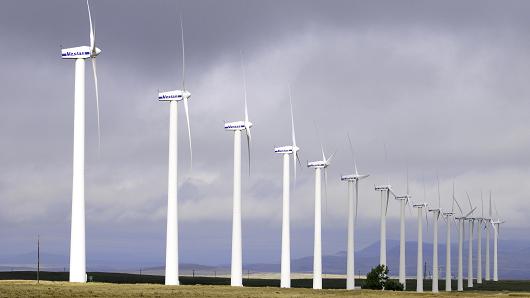Vestas looks to China to boost turbine business
Published on:20 Aug,2015
Vestas suffered in morning trading Wednesday as the company's stronger-than-expected second-quarter results failed to offset concerns over its ability to compete with a falling oil price.
In the second quarter of 2015, revenue, earnings and cash flow increased when compared to the second quarter of 2014, the company said in a release. Revenue was 1.75 billion euros, up 30 percent when compared to last year.
In a statement on the Vestas website to accompany today's announcement, CEO Anders Runevad said, "Vestas continued to execute well on our strategy in the second quarter of 2015, delivering a strong result on our key financial and operational parameters."
"Order intake was particularly strong, and with a combined order backlog of 16.9 billion euros ($18.6 billion) we are well-positioned for the future," Runevad added.
Commenting further on the figures, Runevad told CNBC that "the results are very strong in the quarter" before adding that there had been "very good growth in orders, up 56 percent year on year, (with) revenue up 30 percent."
The latest figures come after a difficult few years for Vestas. In November 2012, shares in the Aarhus based company fell as much as 11 percent when it released earnings that were below expectations and announced job cuts.
The low price of oil and other fossil fuels have also added to concerns over Vestas as fewer renewable energy projects are being started.
Runevad told CNBC that China would remain a key market for the company. "China is and will continue to be a big market for renewables… because of… both the need for changing the energy mix and, of course, tremendous energy consumption."
Runevad added that, "The government has been very supportive on infrastructure and has been very supportive on renewables, and we expect that to continue."
He went on to say that while Vestas had a good market share for a non-Chinese supplier, its overall market share in the country was small. "That is an area which we are addressing, and we see a good growth year on year during the first half for us," he said.
Looking forward, Runevald said that, "Overall, longer term, there is a strong trend in changing the energy mix."
"We saw President Obama's Clean Energy Act, that's much more long term; we have the COP21 in Paris coming up and countries are committed to reduce CO2 levels and… wind is today, the most cost efficient alternative."